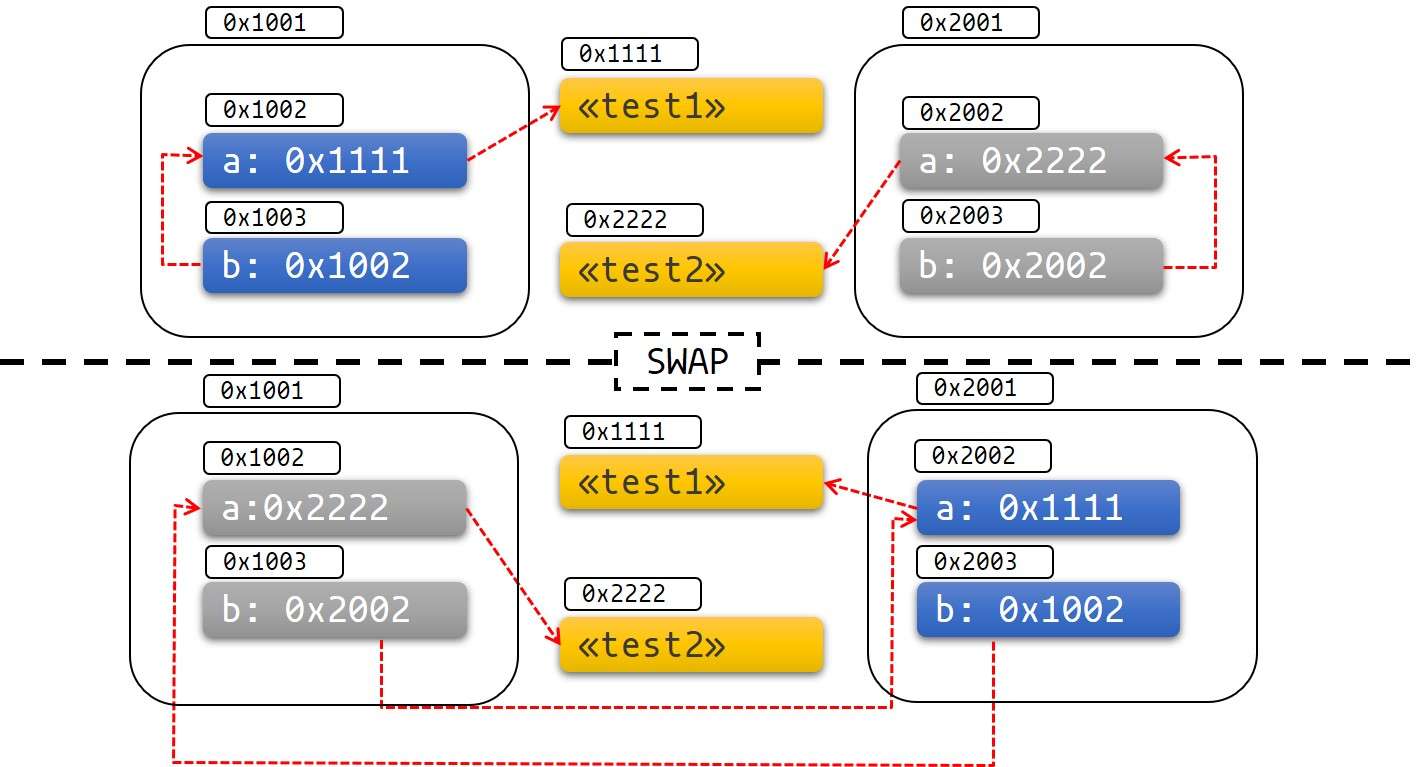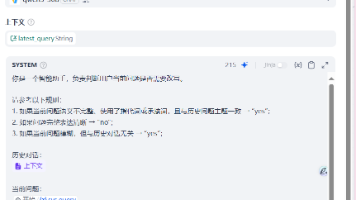【转】Rust语言圣经之定海神针 Pin 和 Unpin
说明:下面文章中有个人的补充说明内容。谨供参考。
定海神针 Pin 和 Unpin
在 Rust 异步编程中,有一个定海神针般的存在,它就是 Pin,作用说简单也简单,说复杂也非常复杂,当初刚出来时就连一些 Rust 大佬都一头雾水,何况瑟瑟发抖的我。好在今非昔比,目前网上的资料已经很全,而我就借花献佛,给大家好好讲讲这个 Pin。
在 Rust 中,所有的类型可以分为两类:
- 类型的值可以在内存中安全地被移动,例如数值、字符串、布尔值、结构体、枚举,总之你能想到的几乎所有类型都可以落入到此范畴内
- 自引用类型,大魔王来了,大家快跑,在之前章节我们已经见识过它的厉害
下面就是一个自引用类型
struct SelfRef {
value: String,
pointer_to_value: *mut String,
}
在上面的结构体中,pointer_to_value 是一个裸指针,指向第一个字段 value 持有的字符串 String 。很简单对吧?现在考虑一个情况, 若 value 被移动了怎么办?
此时一个致命的问题就出现了:value 的内存地址变了,而 pointer_to_value 依然指向 value 之前的地址,一个重大 bug 就出现了!
灾难发生,英雄在哪?只见 Pin 闪亮登场,它可以防止一个类型在内存中被移动。再来回忆下之前在 Future 章节中,我们提到过在 poll 方法的签名中有一个 self: Pin<&mut Self> ,那么为何要在这里使用 Pin 呢?
为何需要 Pin
其实 Pin 还有一个小伙伴 UnPin ,与前者相反,后者表示类型可以在内存中安全地移动。在深入之前,我们先来回忆下 async/.await 是如何工作的:
let fut_one = /* ... */; // Future 1
let fut_two = /* ... */; // Future 2
async move {
fut_one.await;
fut_two.await;
}
在底层,async 会创建一个实现了 Future 的匿名类型,并提供了一个 poll 方法:
// `async { ... }`语句块创建的 `Future` 类型
struct AsyncFuture {
fut_one: FutOne,
fut_two: FutTwo,
state: State,
}
// `async` 语句块可能处于的状态
enum State {
AwaitingFutOne,
AwaitingFutTwo,
Done,
}
impl Future for AsyncFuture {
type Output = ();
fn poll(mut self: Pin<&mut Self>, cx: &mut Context<'_>) -> Poll<()> {
loop {
match self.state {
State::AwaitingFutOne => match self.fut_one.poll(..) {
Poll::Ready(()) => self.state = State::AwaitingFutTwo,
Poll::Pending => return Poll::Pending,
}
State::AwaitingFutTwo => match self.fut_two.poll(..) {
Poll::Ready(()) => self.state = State::Done,
Poll::Pending => return Poll::Pending,
}
State::Done => return Poll::Ready(()),
}
}
}
}
当 poll 第一次被调用时,它会去查询 fut_one 的状态,若 fut_one 无法完成,则 poll 方法会返回。未来对 poll 的调用将从上一次调用结束的地方开始。该过程会一直持续,直到 Future 完成为止。
然而,如果我们的 async 语句块中使用了引用类型,会发生什么?例如下面例子:
async {
let mut x = [0; 128];
let read_into_buf_fut = read_into_buf(&mut x);
read_into_buf_fut.await;
println!("{:?}", x);
}
这段代码会编译成下面的形式:
struct ReadIntoBuf<'a> {
buf: &'a mut [u8], // 指向下面的`x`字段
}
struct AsyncFuture {
x: [u8; 128],
read_into_buf_fut: ReadIntoBuf<'what_lifetime?>,
}
这里,ReadIntoBuf 拥有一个引用字段,指向了结构体的另一个字段 x ,一旦 AsyncFuture 被移动,那 x 的地址也将随之变化,此时对 x 的引用就变成了不合法的,也就是 read_into_buf_fut.buf 会变为不合法的。
总结:当async fn或async block中有参数的生命周期时,此时生命周期也会存储到future当中,这就形成了一个自引用(self-referential)类型。所以需要用Pin。【此处为笔者补充!】
若能将 Future 在内存中固定到一个位置,就可以避免这种问题的发生,也就可以安全的创建上面这种引用类型。
【进一步补充】
对于下面的代码:
use tokio::io::{self, AsyncReadExt};
use tokio::fs::File;
#[tokio::main]
async fn main() -> io::Result<()> {
let mut f = File::open("foo.txt").await?;
let mut buffer = Vec::new();
// 读取整个文件的内容
f.read_to_end(&mut buffer).await?;
Ok(())
}
可以在playgroud中,查看对应的MIR和HIR代码:
//部分MIR代码
fn main::{closure#0}(_1: Pin<&mut {async block@src/main.rs:4:1: 4:15}>, _2: &mut Context<'_>) -> Poll<Result<(), std::io::Error>> {
debug _task_context => _31;
let mut _0: std::task::Poll<std::result::Result<(), std::io::Error>>;
let mut _3: std::ops::ControlFlow<std::result::Result<std::convert::Infallible, std::io::Error>, tokio::fs::File>;
let mut _4: {async fn body of tokio::fs::File::open<&str>()};
let mut _5: {async fn body of tokio::fs::File::open<&str>()};
let mut _6: std::task::Poll<std::result::Result<tokio::fs::File, std::io::Error>>;
let mut _7: std::pin::Pin<&mut {async fn body of tokio::fs::File::open<&str>()}>;
let mut _8: &mut {async fn body of tokio::fs::File::open<&str>()};
let mut _9: &mut std::task::Context<'_>;
let mut _10: isize;
let mut _12: isize;
let _13: std::result::Result<std::convert::Infallible, std::io::Error>;
let _14: tokio::fs::File;
let mut _15: std::ops::ControlFlow<std::result::Result<std::convert::Infallible, std::io::Error>, usize>;
let mut _16: tokio::io::util::read_to_end::ReadToEnd<'_, tokio::fs::File>;
let mut _17: tokio::io::util::read_to_end::ReadToEnd<'_, tokio::fs::File>;
let mut _18: &mut tokio::fs::File;
let mut _19: &mut std::vec::Vec<u8>;
let mut _20: std::task::Poll<std::result::Result<usize, std::io::Error>>;
let mut _21: std::pin::Pin<&mut tokio::io::util::read_to_end::ReadToEnd<'_, tokio::fs::File>>;
let mut _22: &mut tokio::io::util::read_to_end::ReadToEnd<'_, tokio::fs::File>;
....
}
上面的信息可供参考。
Unpin
事实上,绝大多数类型都不在意是否被移动(开篇提到的第一种类型),因此它们都自动实现了 Unpin 特征。
从名字推测,大家可能以为 Pin 和 Unpin 都是特征吧?实际上,Pin 不按套路出牌,它是一个结构体:
pub struct Pin<P> {
pointer: P,
}
它包裹一个指针,并且能确保该指针指向的数据不会被移动,例如 Pin<&mut T> , Pin<&T> , Pin<Box> ,都能确保 T 不会被移动。
而 Unpin 才是一个特征,它表明一个类型可以随意被移动,那么问题来了,可以被 Pin 住的值,它有没有实现什么特征呢? 答案很出乎意料,可以被 Pin 住的值实现的特征是 !Unpin ,大家可能之前没有见过,但是它其实很简单,! 代表没有实现某个特征的意思,!Unpin 说明类型没有实现 Unpin 特征,那自然就可以被 Pin 了。
那是不是意味着类型如果实现了 Unpin 特征,就不能被 Pin 了?其实,还是可以 Pin 的,毕竟它只是一个结构体,你可以随意使用,但是不再有任何效果而已,该值一样可以被移动!
例如 Pin<&mut u8> ,显然 u8 实现了 Unpin 特征,它可以在内存中被移动,因此 Pin<&mut u8> 跟 &mut u8 实际上并无区别,一样可以被移动。
因此,一个类型如果不能被移动,它必须实现 !Unpin 特征。如果大家对 Pin 、 Unpin 还是模模糊糊,建议再重复看一遍之前的内容,理解它们对于我们后面要讲到的内容非常重要!
如果将 Unpin 与之前章节学过的 Send/Sync 进行下对比,会发现它们都很像:
都是标记特征( marker trait ),该特征未定义任何行为,非常适用于标记
都可以通过!语法去除实现
绝大多数情况都是自动实现, 无需我们的操心
深入理解 Pin
对于上面的问题,我们可以简单的归结为如何在 Rust 中处理自引用类型(果然,只要是难点,都和自引用脱离不了关系),下面用一个稍微简单点的例子来理解下 Pin :
#[derive(Debug)]
struct Test {
a: String,
b: *const String,
}
impl Test {
fn new(txt: &str) -> Self {
Test {
a: String::from(txt),
b: std::ptr::null(),
}
}
fn init(&mut self) {
let self_ref: *const String = &self.a;
self.b = self_ref;
}
fn a(&self) -> &str {
&self.a
}
fn b(&self) -> &String {
assert!(!self.b.is_null(), "Test::b called without Test::init being called first");
unsafe { &*(self.b) }
}
}
Test 提供了方法用于获取字段 a 和 b 的值的引用。这里b 是 a 的一个引用,但是我们并没有使用引用类型而是用了裸指针,原因是:Rust 的借用规则不允许我们这样用,因为不符合生命周期的要求。 此时的 Test 就是一个自引用结构体。
如果不移动任何值,那么上面的例子将没有任何问题,例如:
fn main() {
let mut test1 = Test::new("test1");
test1.init();
let mut test2 = Test::new("test2");
test2.init();
println!("a: {}, b: {}", test1.a(), test1.b());
println!("a: {}, b: {}", test2.a(), test2.b());
}
输出非常正常:
a: test1, b: test1
a: test2, b: test2
明知山有虎,偏向虎山行,这才是我辈年轻人的风华。既然移动数据会导致指针不合法,那我们就移动下数据试试,将 test1 和 test2 进行下交换:
fn main() {
let mut test1 = Test::new("test1");
test1.init();
let mut test2 = Test::new("test2");
test2.init();
println!("a: {}, b: {}", test1.a(), test1.b());
std::mem::swap(&mut test1, &mut test2);
println!("a: {}, b: {}", test2.a(), test2.b());
}
按理来说,这样修改后,输出应该如下:
a: test1, b: test1
a: test1, b: test1
但是实际运行后,却产生了下面的输出:
a: test1, b: test1
a: test1, b: test2
原因是 test2.b 指针依然指向了旧的地址,而该地址对应的值现在在 test1 里,最终会打印出意料之外的值。
如果大家还是将信将疑,那再看看下面的代码:
fn main() {
let mut test1 = Test::new("test1");
test1.init();
let mut test2 = Test::new("test2");
test2.init();
println!("a: {}, b: {}", test1.a(), test1.b());
std::mem::swap(&mut test1, &mut test2);
test1.a = "I've totally changed now!".to_string();
println!("a: {}, b: {}", test2.a(), test2.b());
}
下面的图片也可以帮助更好的理解这个过程:

Pin 在实践中的运用
在理解了 Pin 的作用后,我们再来看看它怎么帮我们解决问题。
将值固定到栈上,PhantomPinned出场
【源码补充:PhantomPinned实现了!Unpin】
// https://doc.rust-lang.org/src/core/marker.rs.html#1005
#[stable(feature = "pin", since = "1.33.0")]
#[derive(Debug, Default, Copy, Clone, Eq, PartialEq, Ord, PartialOrd, Hash)]
pub struct PhantomPinned;
#[stable(feature = "pin", since = "1.33.0")]
impl !Unpin for PhantomPinned {}
回到之前的例子,我们可以用 Pin 来解决指针指向的数据被移动的问题:
use std::pin::Pin;
use std::marker::PhantomPinned;
#[derive(Debug)]
struct Test {
a: String,
b: *const String,
_marker: PhantomPinned,
}
impl Test {
fn new(txt: &str) -> Self {
Test {
a: String::from(txt),
b: std::ptr::null(),
_marker: PhantomPinned, // 这个标记可以让我们的类型自动实现特征`!Unpin`
}
}
fn init(self: Pin<&mut Self>) {
let self_ptr: *const String = &self.a;
let this = unsafe { self.get_unchecked_mut() };
this.b = self_ptr;
}
fn a(self: Pin<&Self>) -> &str {
&self.get_ref().a
}
fn b(self: Pin<&Self>) -> &String {
assert!(!self.b.is_null(), "Test::b called without Test::init being called first");
unsafe { &*(self.b) }
}
}
上面代码中,我们使用了一个标记类型 PhantomPinned 将自定义结构体 Test 变成了 !Unpin (编译器会自动帮我们实现),因此该结构体无法再被移动。
一旦类型实现了 !Unpin ,那将它的值固定到栈( stack )上就是不安全的行为,因此在代码中我们使用了 unsafe 语句块来进行处理,你也可以使用 pin_utils 来避免 unsafe 的使用。
BTW, Rust 中的 unsafe 其实没有那么可怕,虽然听上去很不安全,但是实际上 Rust 依然提供了很多机制来帮我们提升了安全性,因此不必像对待 Go 语言的 unsafe 那样去畏惧于使用 Rust 中的 unsafe ,大致使用原则总结如下:没必要用时,就不要用,当有必要用时,就大胆用,但是尽量控制好边界,让 unsafe 的范围尽可能小。
此时,再去尝试移动被固定的值,就会导致编译错误:
pub fn main() {
// 此时的`test1`可以被安全的移动
let mut test1 = Test::new("test1");
// 新的`test1`由于使用了`Pin`,因此无法再被移动,这里的声明会将之前的`test1`遮蔽掉(shadow)
let mut test1 = unsafe { Pin::new_unchecked(&mut test1) };
Test::init(test1.as_mut());
let mut test2 = Test::new("test2");
let mut test2 = unsafe { Pin::new_unchecked(&mut test2) };
Test::init(test2.as_mut());
println!("a: {}, b: {}", Test::a(test1.as_ref()), Test::b(test1.as_ref()));
std::mem::swap(test1.get_mut(), test2.get_mut());
println!("a: {}, b: {}", Test::a(test2.as_ref()), Test::b(test2.as_ref()));
}
注意到之前的粗体字了吗?是的,Rust 并不是在运行时做这件事,而是在编译期就完成了,因此没有额外的性能开销!来看看报错:
error[E0277]: `PhantomPinned` cannot be unpinned
--> src/main.rs:47:43
|
47 | std::mem::swap(test1.get_mut(), test2.get_mut());
| ^^^^^^^ within `Test`, the trait `Unpin` is not implemented for `PhantomPinned`
需要注意的是固定在栈上非常依赖于你写出的 unsafe 代码的正确性。我们知道 &'a mut T 可以固定的生命周期是 'a ,但是我们却不知道当生命周期 'a 结束后,该指针指向的数据是否会被移走。如果你的 unsafe 代码里这么实现了,那么就会违背 Pin 应该具有的作用!
一个常见的错误就是忘记去遮蔽( shadow )初始的变量,因为你可以 drop 掉 Pin ,然后在 &'a mut T 结束后去移动数据:
fn main() {
let mut test1 = Test::new("test1");
let mut test1_pin = unsafe { Pin::new_unchecked(&mut test1) };
Test::init(test1_pin.as_mut());
drop(test1_pin);
println!(r#"test1.b points to "test1": {:?}..."#, test1.b);
let mut test2 = Test::new("test2");
mem::swap(&mut test1, &mut test2);
println!("... and now it points nowhere: {:?}", test1.b);
}
固定到堆上
将一个 !Unpin 类型的值固定到堆上,会给予该值一个稳定的内存地址,它指向的堆中的值在 Pin 后是无法被移动的。而且与固定在栈上不同,我们知道堆上的值在整个生命周期内都会被稳稳地固定住。
use std::pin::Pin;
use std::marker::PhantomPinned;
#[derive(Debug)]
struct Test {
a: String,
b: *const String,
_marker: PhantomPinned,
}
impl Test {
fn new(txt: &str) -> Pin<Box<Self>> {
let t = Test {
a: String::from(txt),
b: std::ptr::null(),
_marker: PhantomPinned,
};
let mut boxed = Box::pin(t);
let self_ptr: *const String = &boxed.as_ref().a;
unsafe { boxed.as_mut().get_unchecked_mut().b = self_ptr };
boxed
}
fn a(self: Pin<&Self>) -> &str {
&self.get_ref().a
}
fn b(self: Pin<&Self>) -> &String {
unsafe { &*(self.b) }
}
}
pub fn main() {
let test1 = Test::new("test1");
let test2 = Test::new("test2");
println!("a: {}, b: {}",test1.as_ref().a(), test1.as_ref().b());
println!("a: {}, b: {}",test2.as_ref().a(), test2.as_ref().b());
}
将固定住的 Future 变为 Unpin
之前的章节我们有提到 async 函数返回的 Future 默认就是 !Unpin 的。
但是,在实际应用中,一些函数会要求它们处理的 Future 是 Unpin 的,此时,若你使用的 Future 是 !Unpin 的,必须要使用以下的方法先将 Future 进行固定:
Box::pin, 创建一个 Pin<Box<T>>
pin_utils::pin_mut!, 创建一个 Pin<&mut T>
笔者补充:若T:!UnPin,但Box< T >是Unpin,因为Box< T >实现了Unpin trait。
【源码补充:impl Unpin for Box<T, A>】
#[stable(feature = "pin", since = "1.33.0")]
impl<T: ?Sized, A: Allocator> Unpin for Box<T, A> {}
固定后获得的 Pin<Box< T>> 和 Pin<&mut T> 既可以用于 Future ,又会自动实现 Unpin。
use pin_utils::pin_mut; // `pin_utils` 可以在crates.io中找到
// 函数的参数是一个`Future`,但是要求该`Future`实现`Unpin`
fn execute_unpin_future(x: impl Future<Output = ()> + Unpin) { /* ... */ }
let fut = async { /* ... */ };
// 下面代码报错: 默认情况下,`fut` 实现的是`!Unpin`,并没有实现`Unpin`
// execute_unpin_future(fut);
// 使用`Box`进行固定
let fut = async { /* ... */ };
let fut = Box::pin(fut);
execute_unpin_future(fut); // OK
// 使用`pin_mut!`进行固定
let fut = async { /* ... */ };
pin_mut!(fut);
execute_unpin_future(fut); // OK
【源码补充:Box<F, A> 】
#[stable(feature = "futures_api", since = "1.36.0")]
impl<F: ?Sized + Future + Unpin, A: Allocator> Future for Box<F, A> {
type Output = F::Output;
fn poll(mut self: Pin<&mut Self>, cx: &mut Context<'_>) -> Poll<Self::Output> {
F::poll(Pin::new(&mut *self), cx)
}
}
【源码补充:&mut T 实现了Unpin】
//https://doc.rust-lang.org/src/core/marker.rs.html#1005
marker_impls! {
#[stable(feature = "pin", since = "1.33.0")]
Unpin for
{T: PointeeSized} &T,
{T: PointeeSized} &mut T,
}
总结
相信大家看到这里,脑袋里已经快被 Pin 、 Unpin 、 !Unpin 整爆炸了,没事,我们再来火上浇油下:)
-
若 T: Unpin ( Rust 类型的默认实现),那么 Pin<'a, T> 跟 &'a mut T 完全相同,也就是 Pin将没有任何效果, 该移动还是照常移动
-
绝大多数标准库类型都实现了 Unpin ,事实上,对于 Rust 中你能遇到的绝大多数类型,该结论依然成立 ,其中一个例外就是:async/await 生成的 Future 没有实现 Unpin,即async 函数返回的 Future 默认就是 !Unpin 的。
-
你可以通过以下方法为自己的类型添加 !Unpin 约束:
- 使用文中提到的 std::marker::PhantomPinned
- 使用nightly 版本下的 feature flag
-
可以将值固定到栈上,也可以固定到堆上
- 将 !Unpin 值固定到栈上需要使用 unsafe
- 将 !Unpin 值固定到堆上无需 unsafe ,可以通过 Box::pin 来简单的实现
-
当固定类型 T: !Unpin 时,你需要保证数据从被固定到被 drop 这段时期内,其内存不会变得非法或者被重用。
-
若T:!UnPin,Box < T > 、&mut T则均实现了Unpin trait。【此处为笔者补充!】
-
当async fn或async block中有参数的生命周期时,此时生命周期也会存储到future当中,这就形成了一个自引用(self-referential)类型。所以需要用Pin。【此处为笔者补充!】
-
Box::pin pins an object to a place in the heap. To pin an object on the stack, you can use the pin macro to create and pin a mutable reference (Pin<&mut T>).
如果想更深一步了解和理解Pin,rust的源码,值得阅读。
【补充】
Macros for pin projection
There are macros available for helping with pin projection.
The pin-project crate provides the #[pin_project] attribute macro (and the #[pin] helper attribute) which implements safe pin projection for you by creating a pinned version of the annotated type which can be accessed using the project method on the annotated type.
Pin-project-lite is an alternative using a declarative macro (pin_project!) which works in a very similar way to pin-project. Pin-project-lite is lightweight in the sense that it is not a procedural macro and therefore does not add dependences for implementing procedural macros to your project. However, it is less expressive than pin-project and does not give custom error messages. Pin-project-lite is recommended if you want to avoid adding the procedural macro dependencies, and pin-project is recommended otherwise.
Pin-utils provides the unsafe_pinned macro to help implement pin projection, but the whole crate is deprecated in favor of the above crates and functionality now in std.
更多推荐
 已为社区贡献7条内容
已为社区贡献7条内容








所有评论(0)